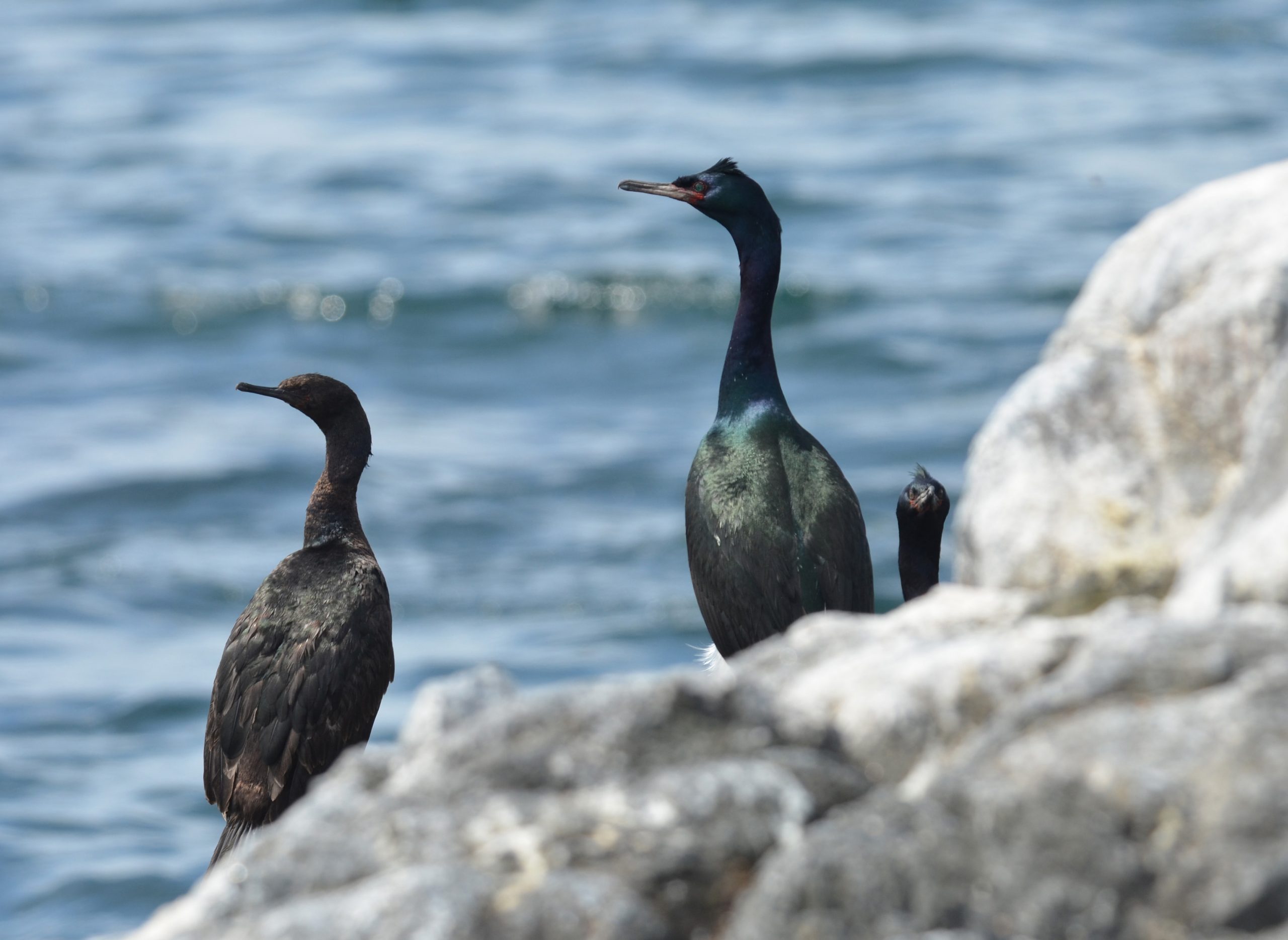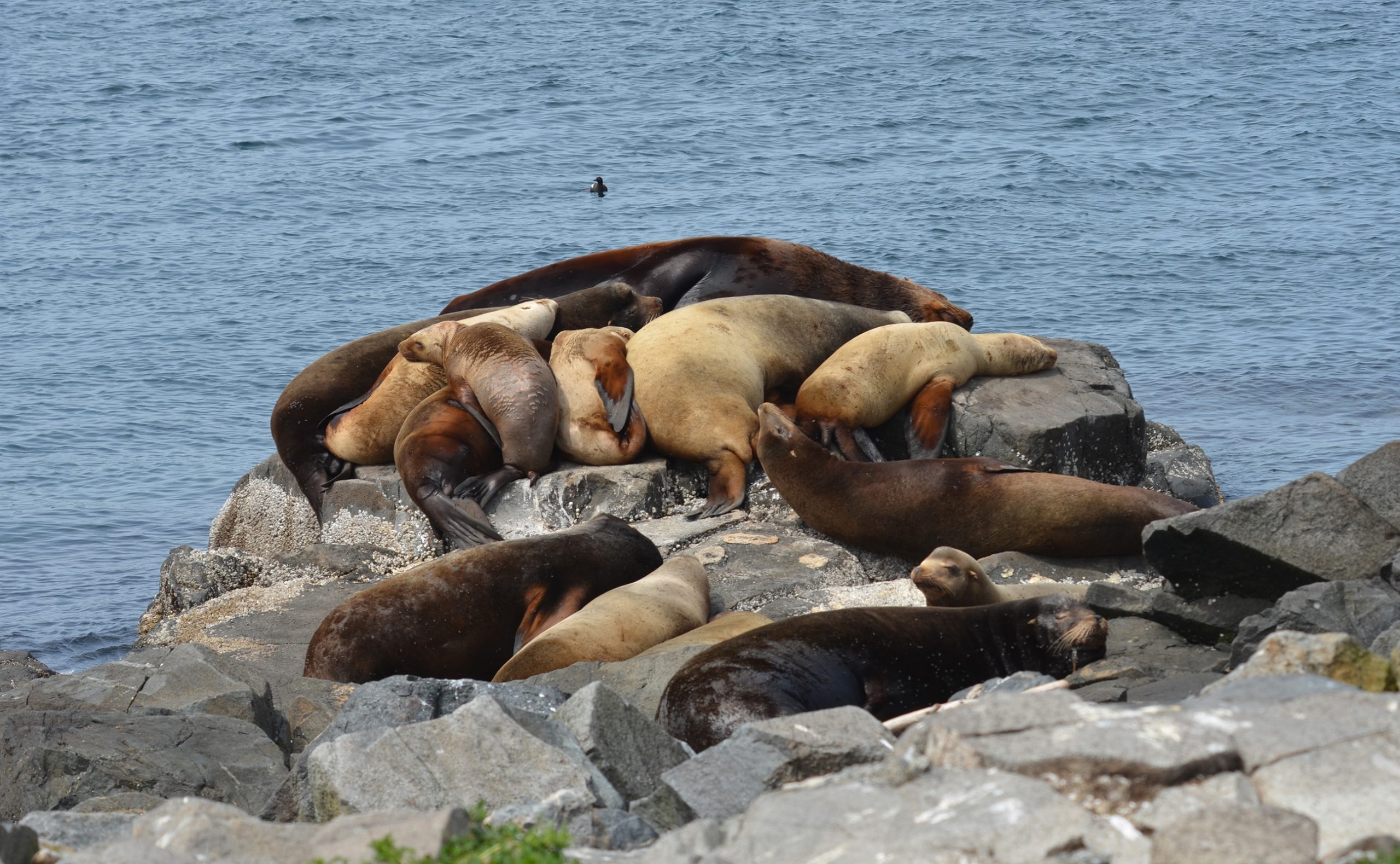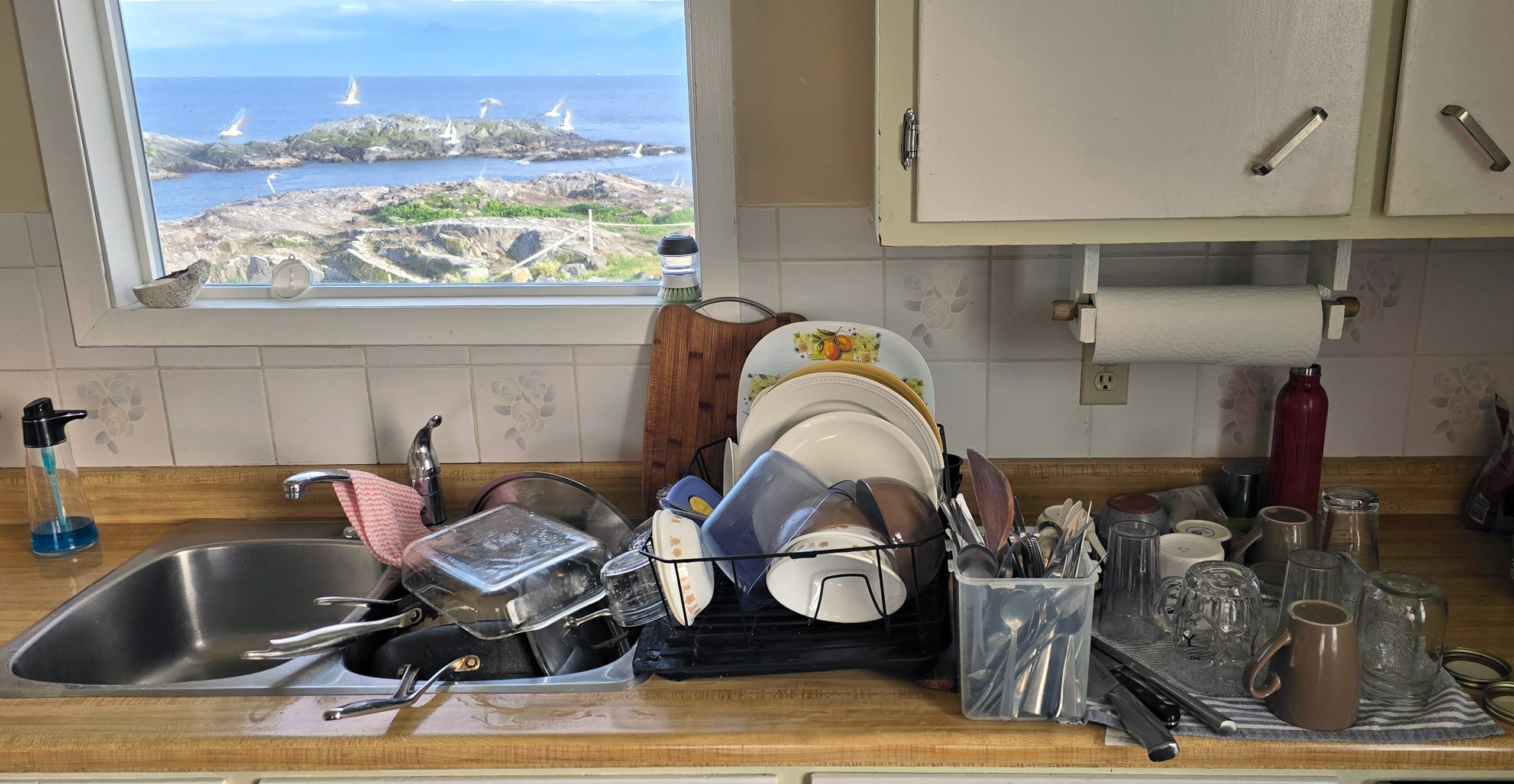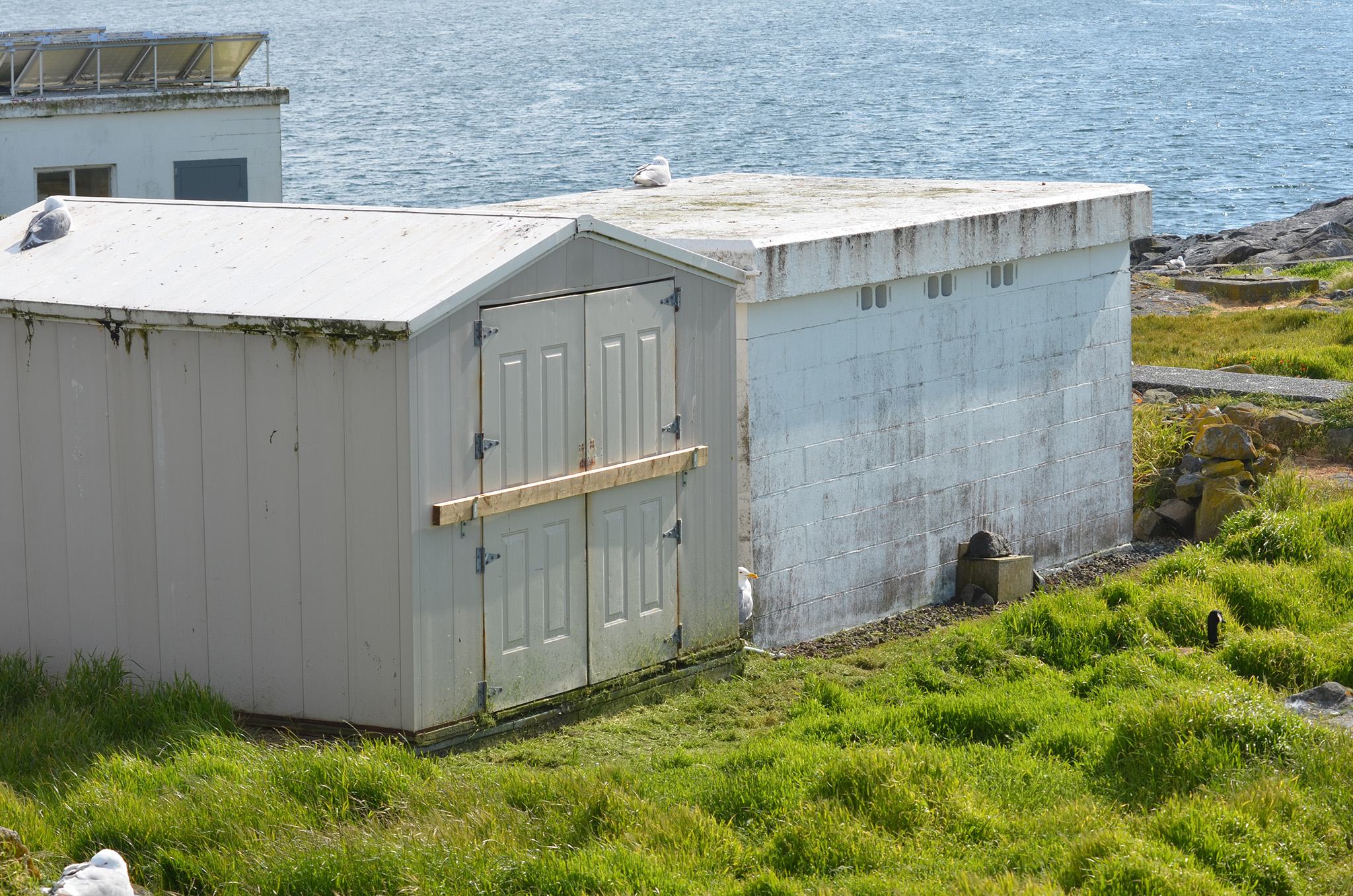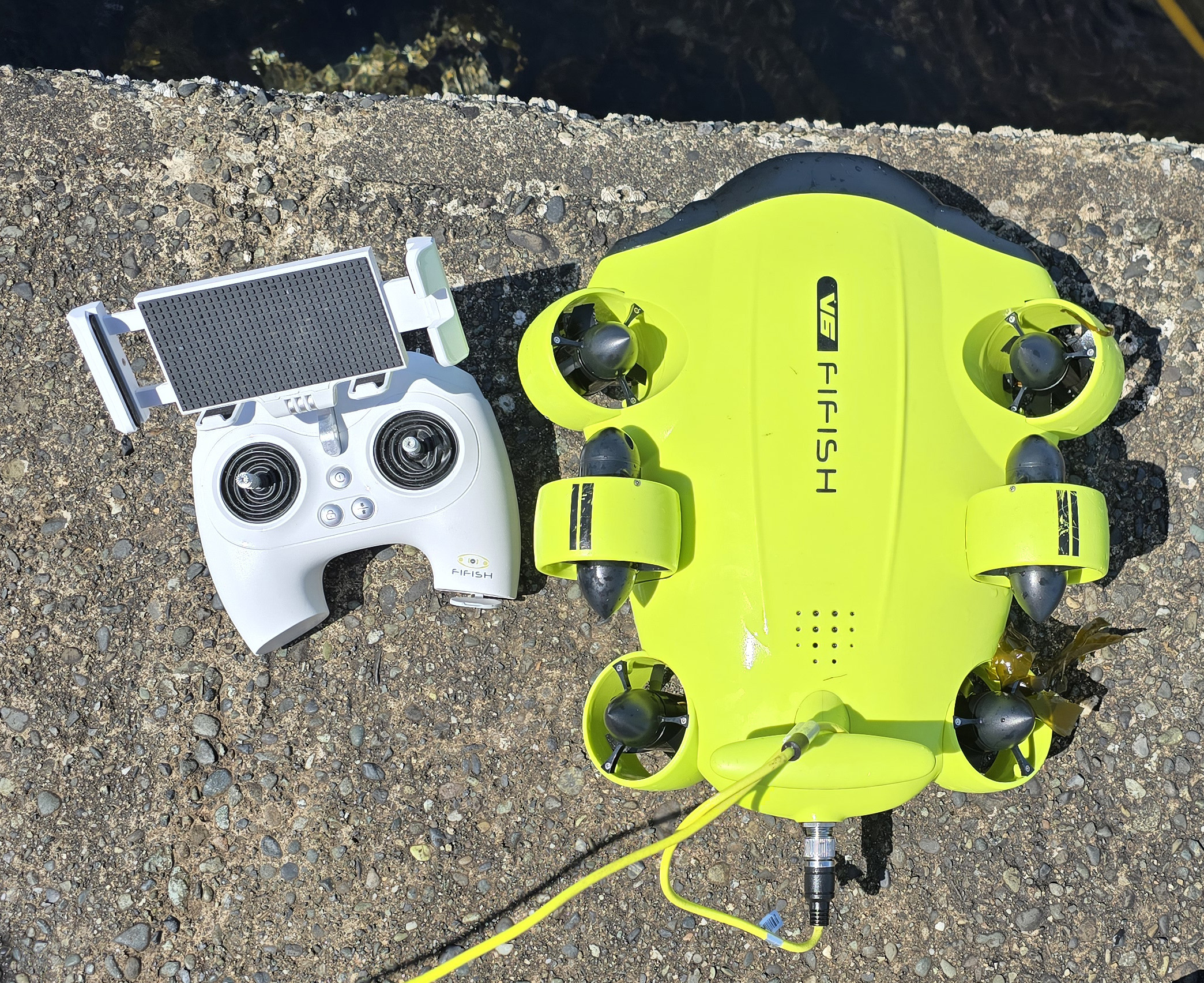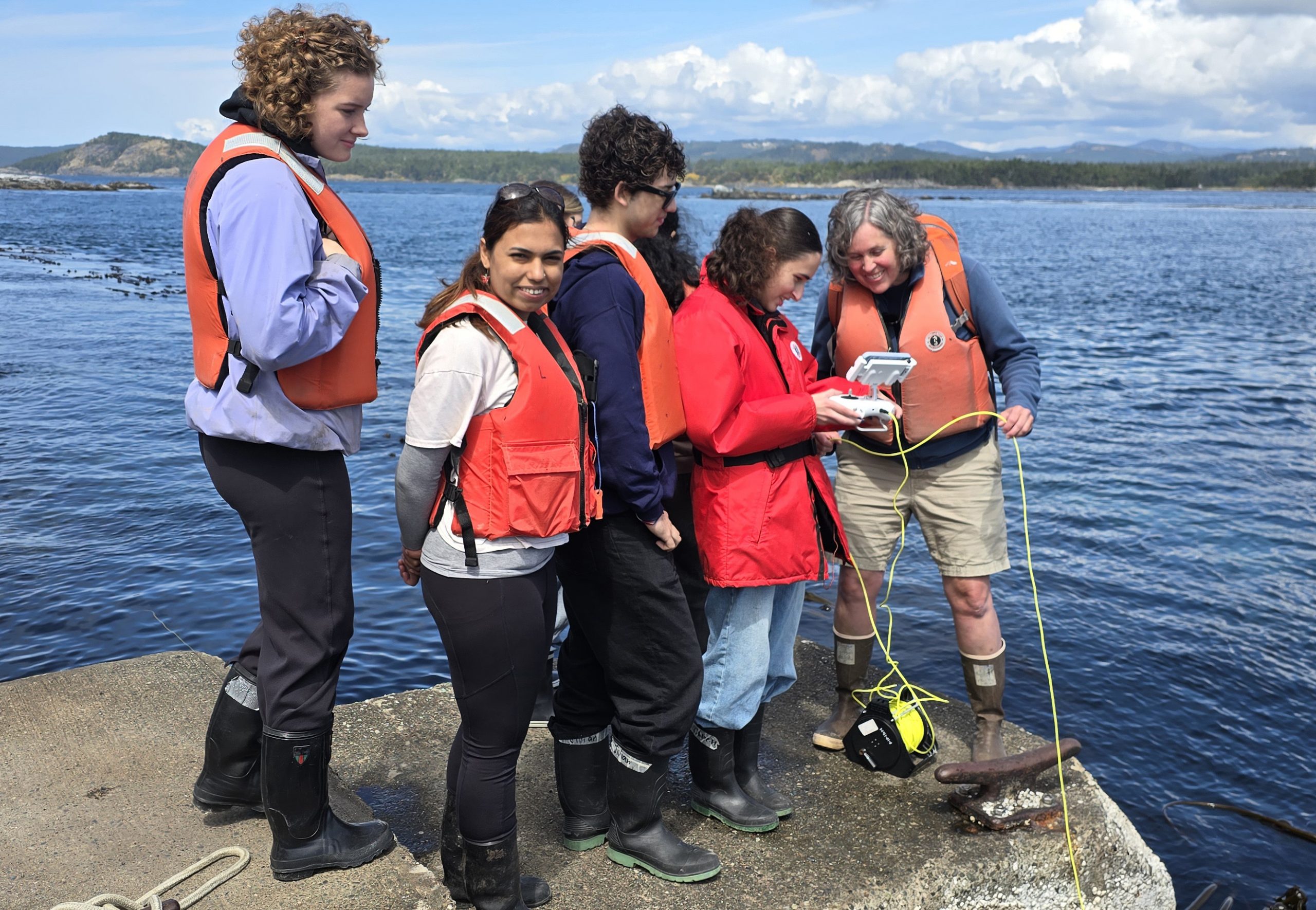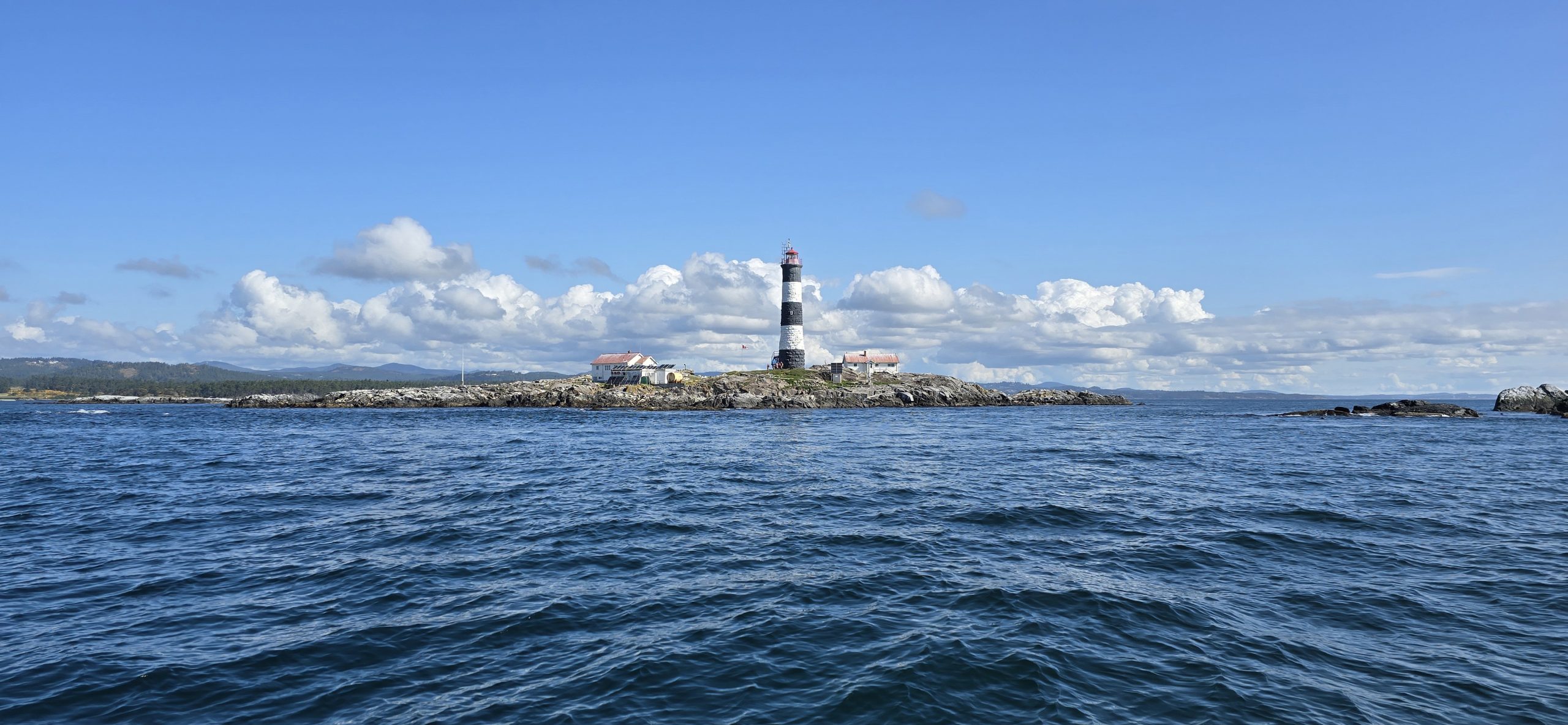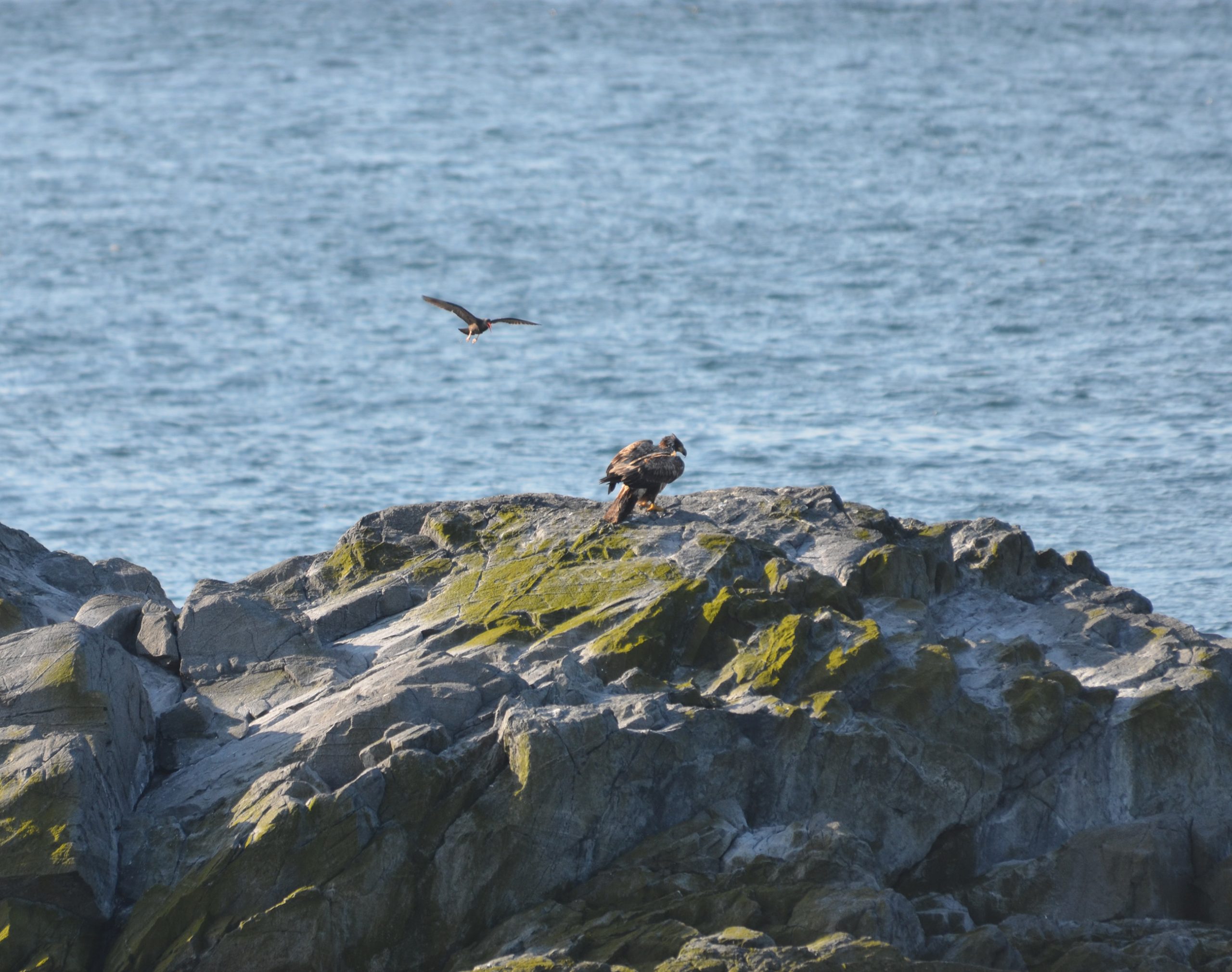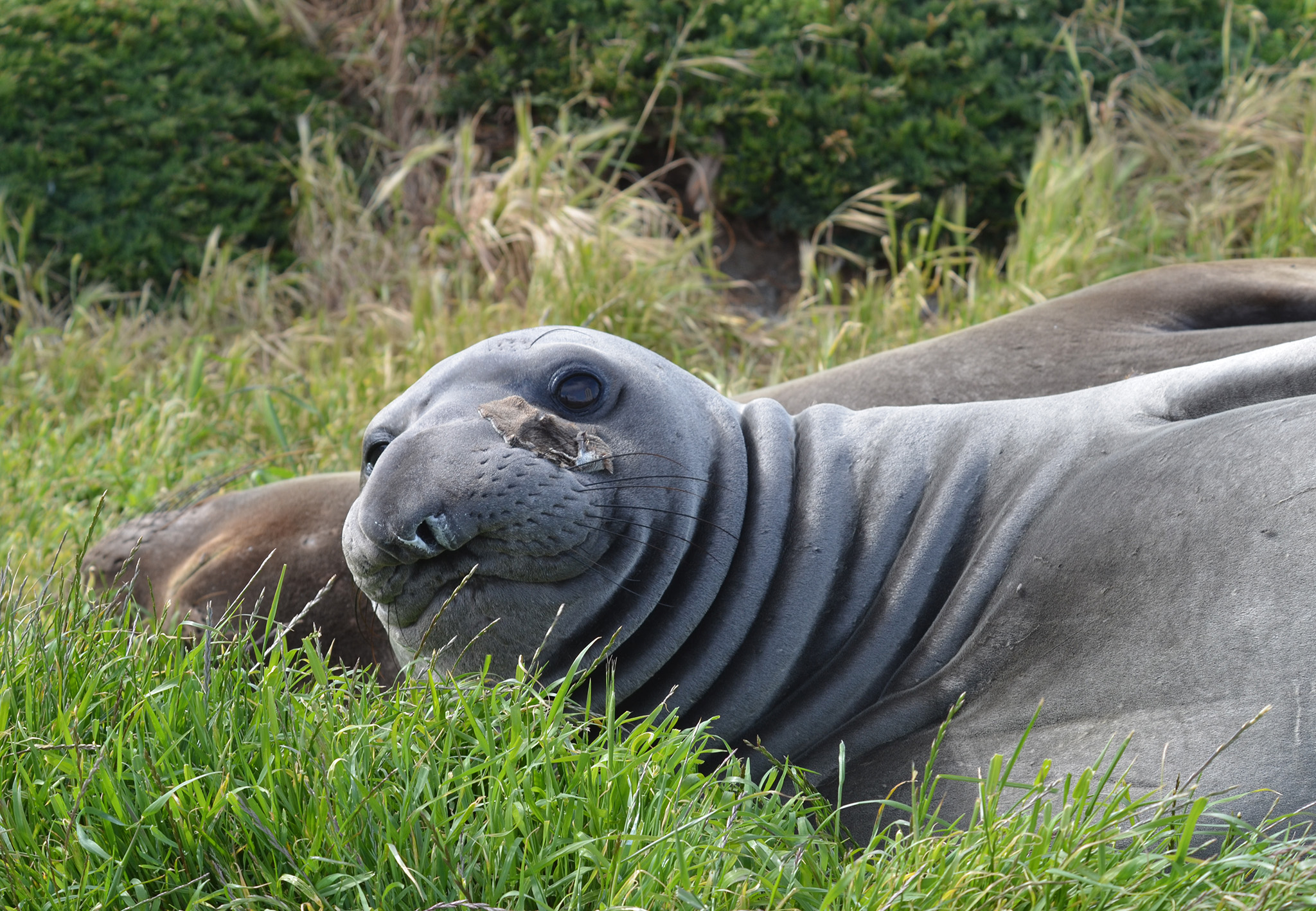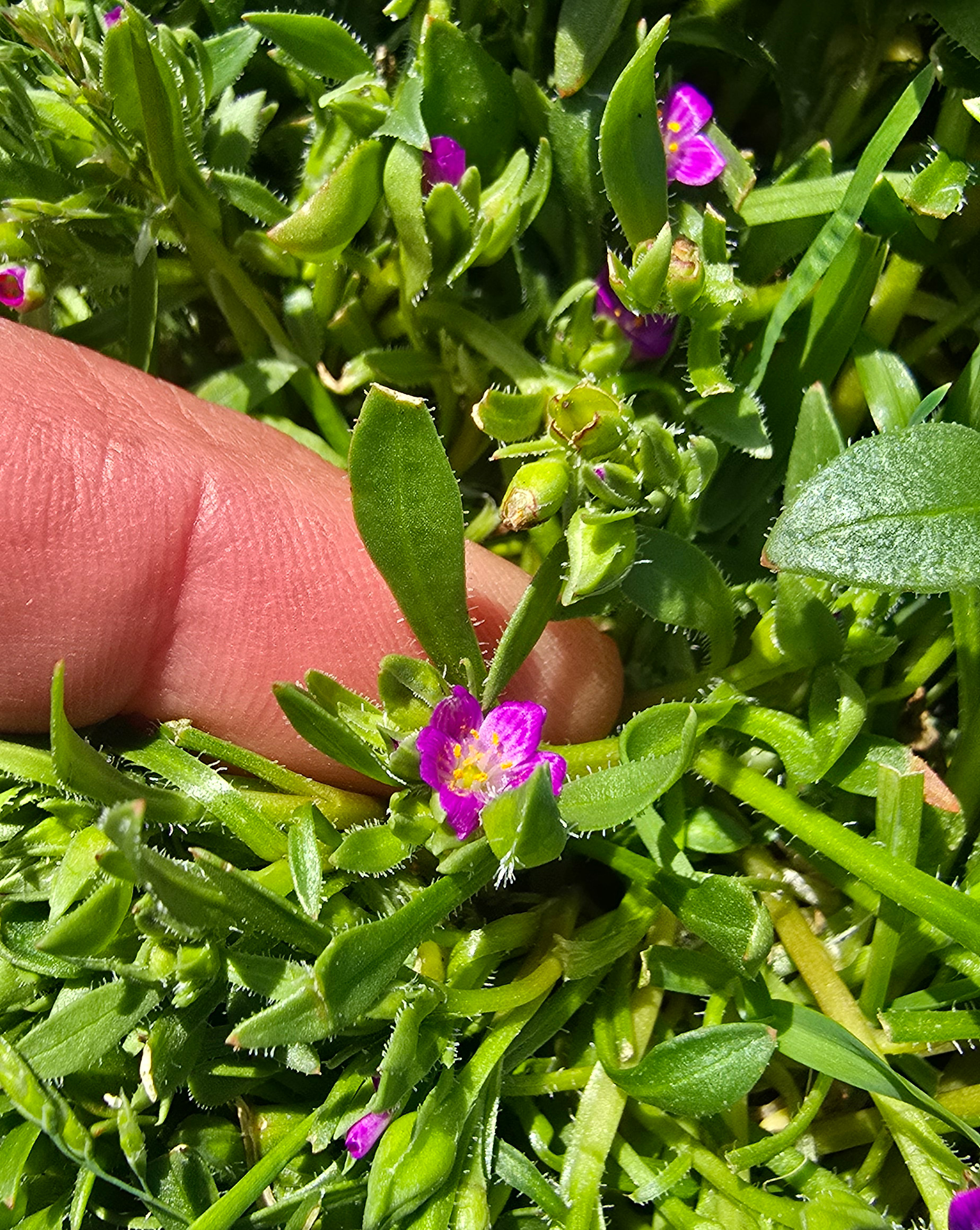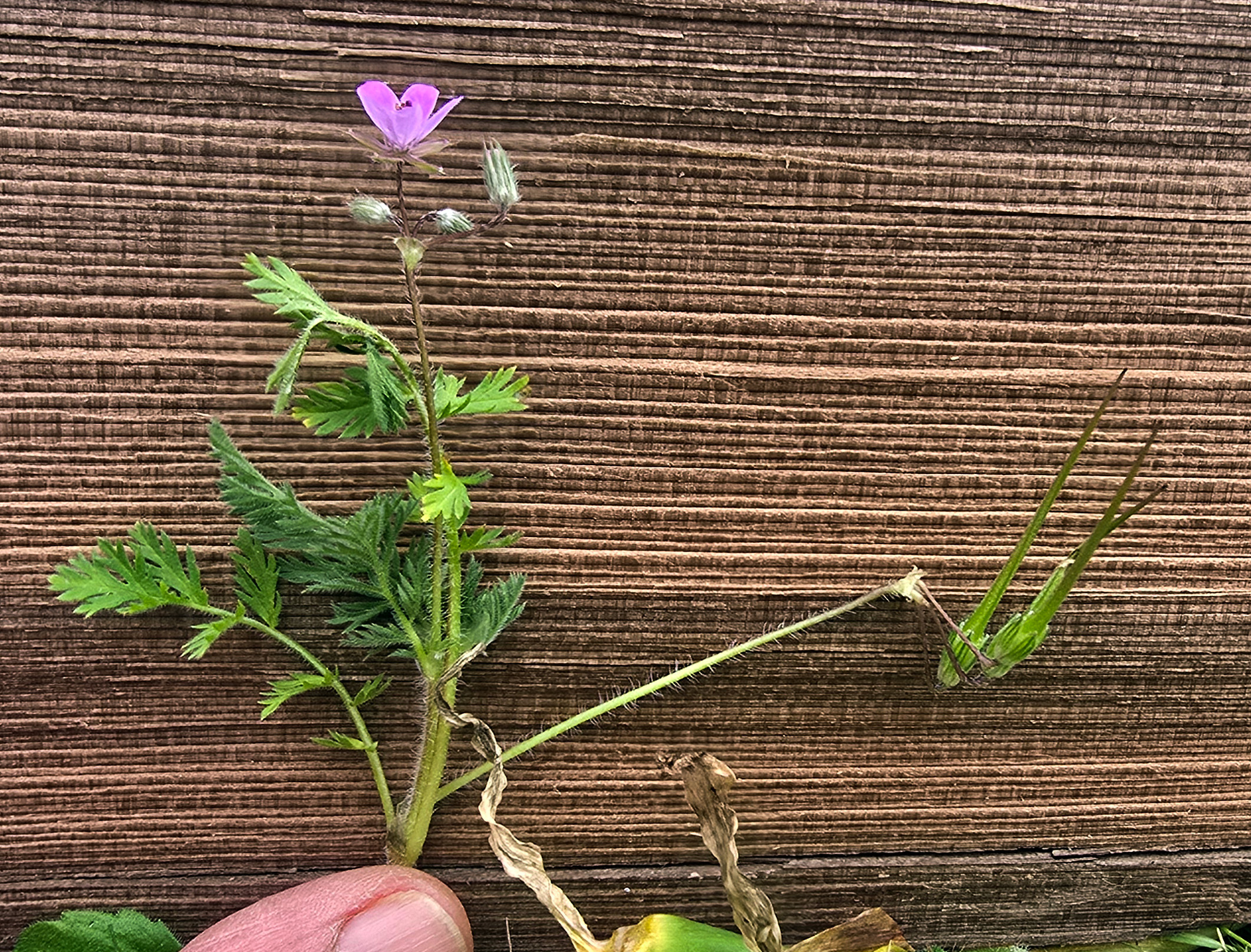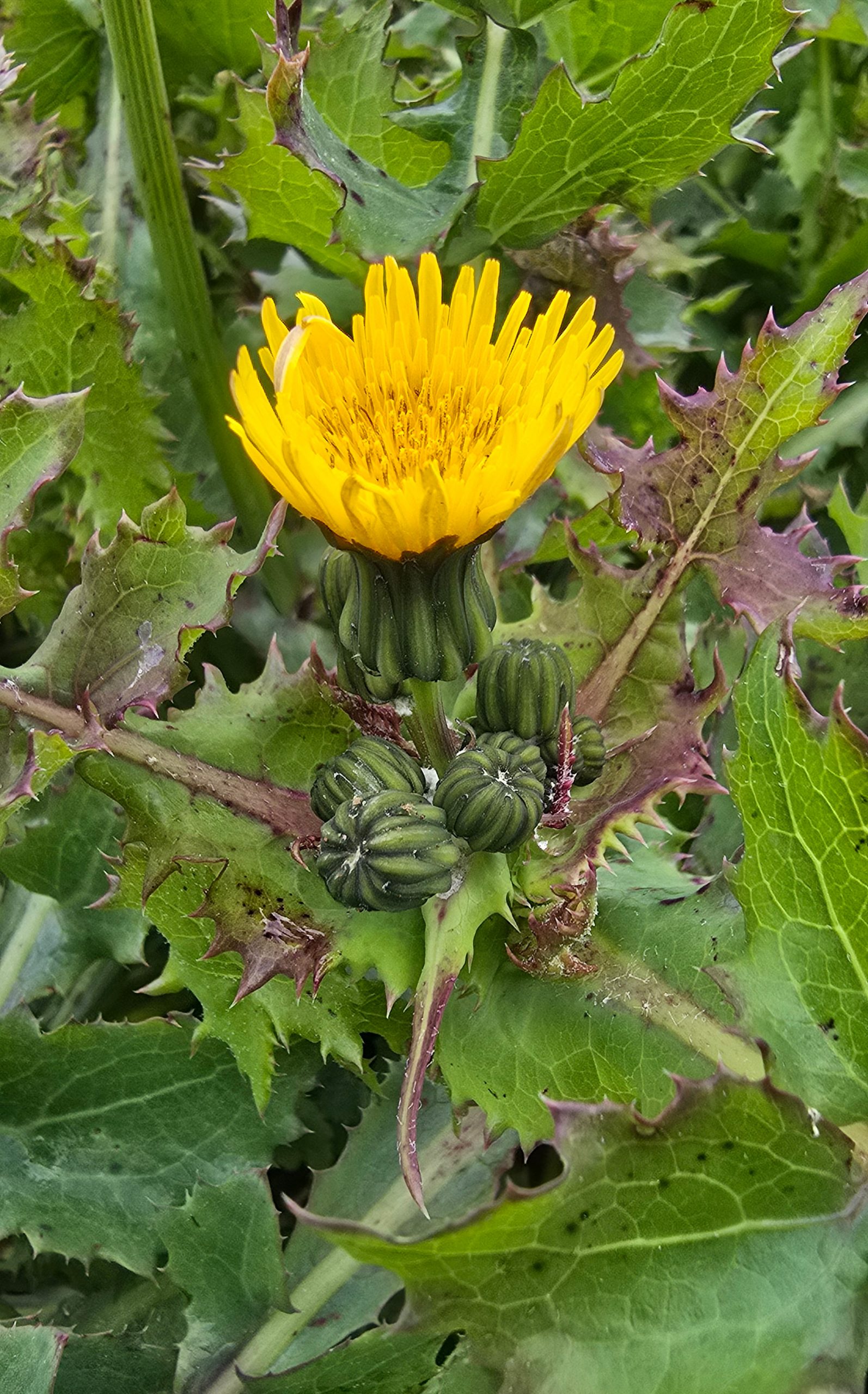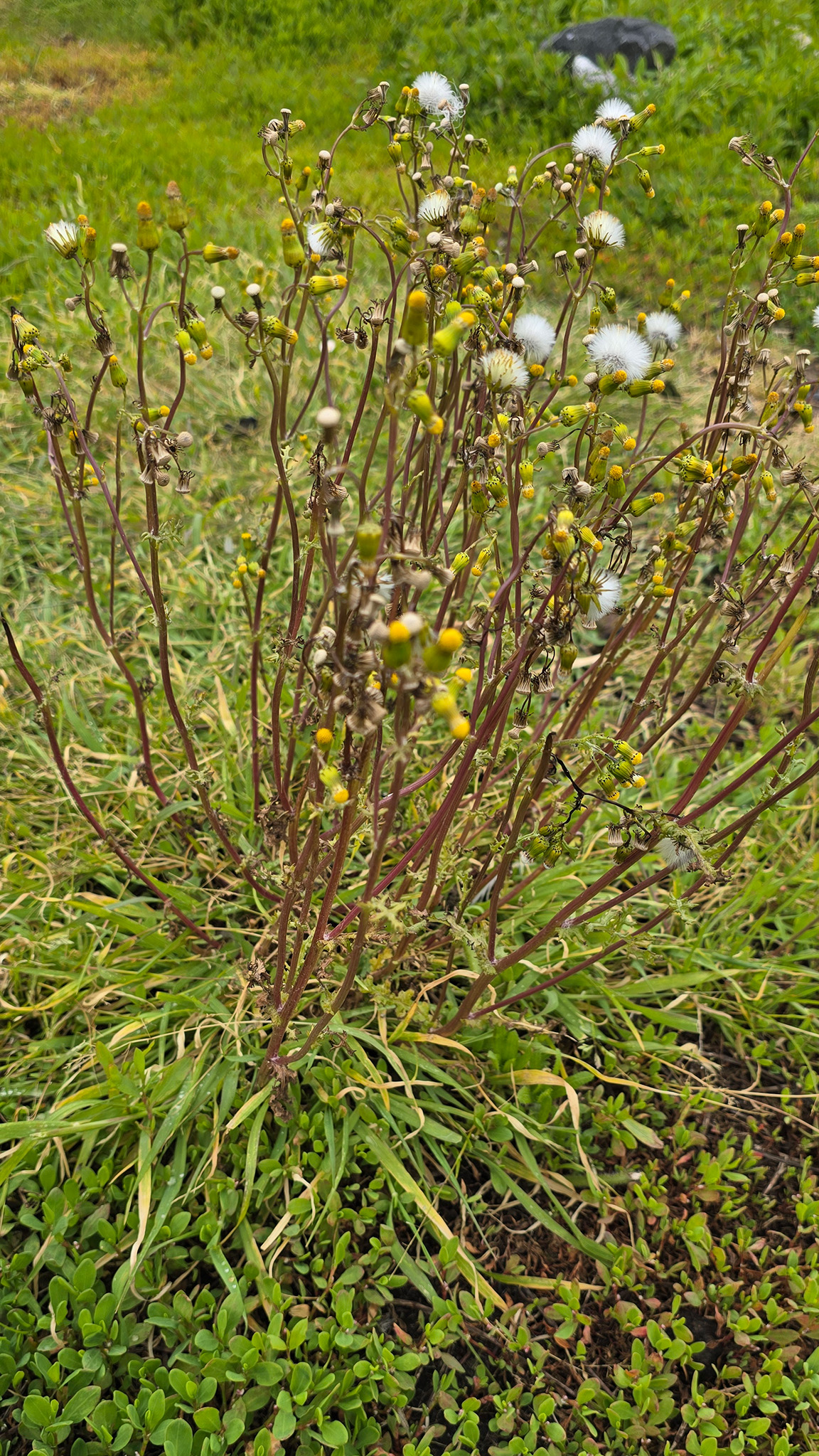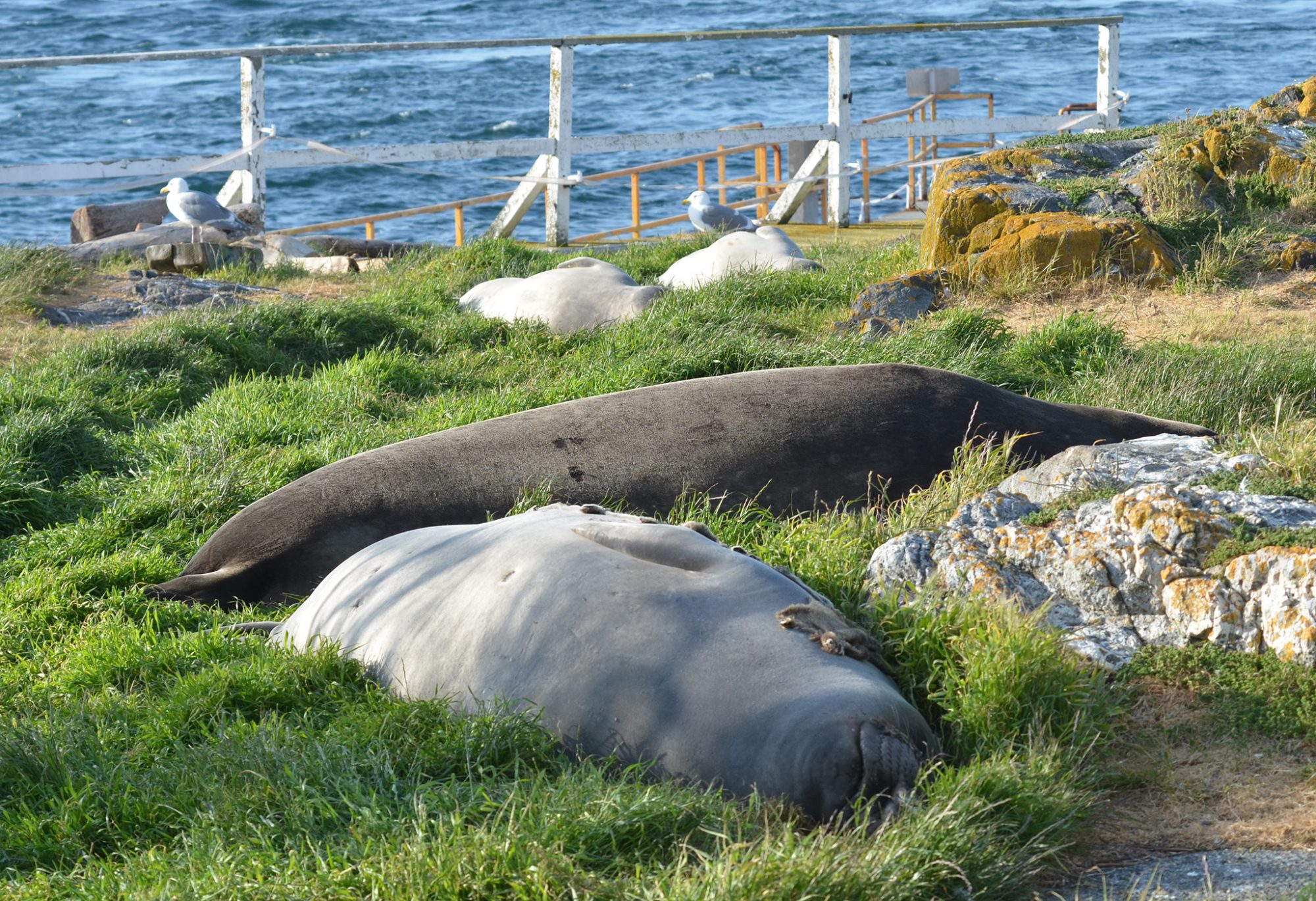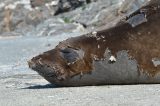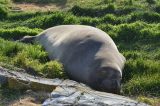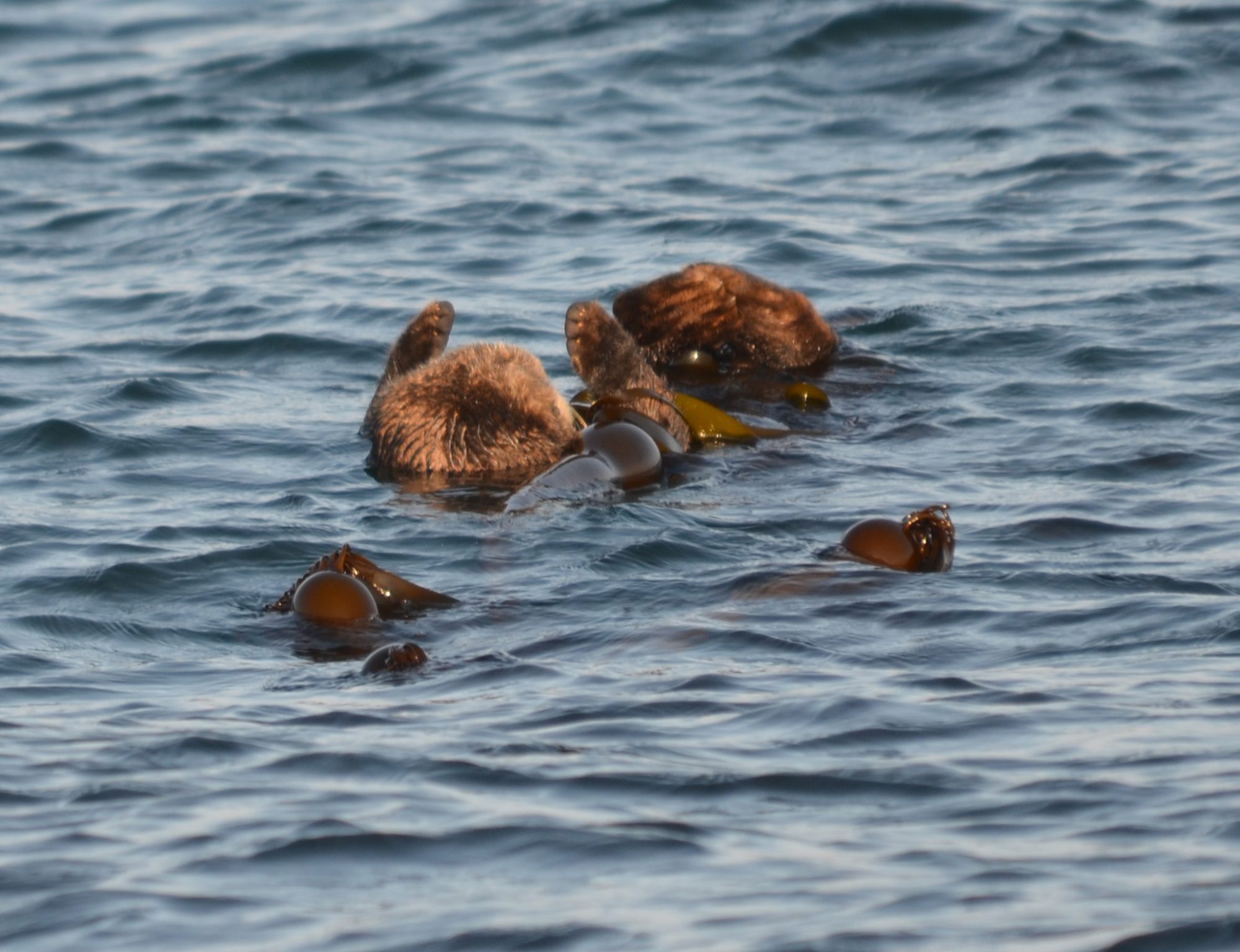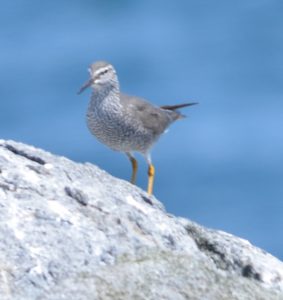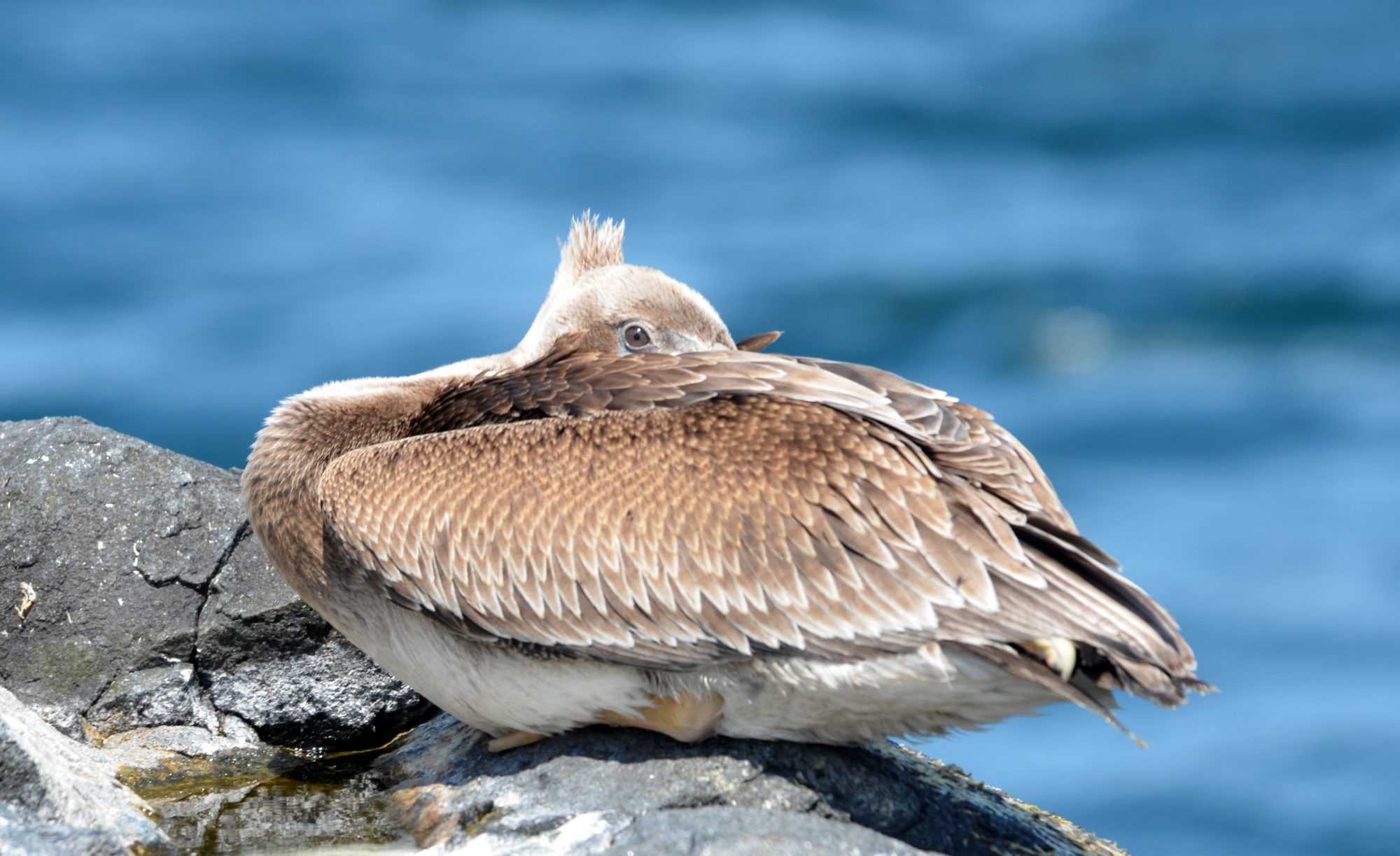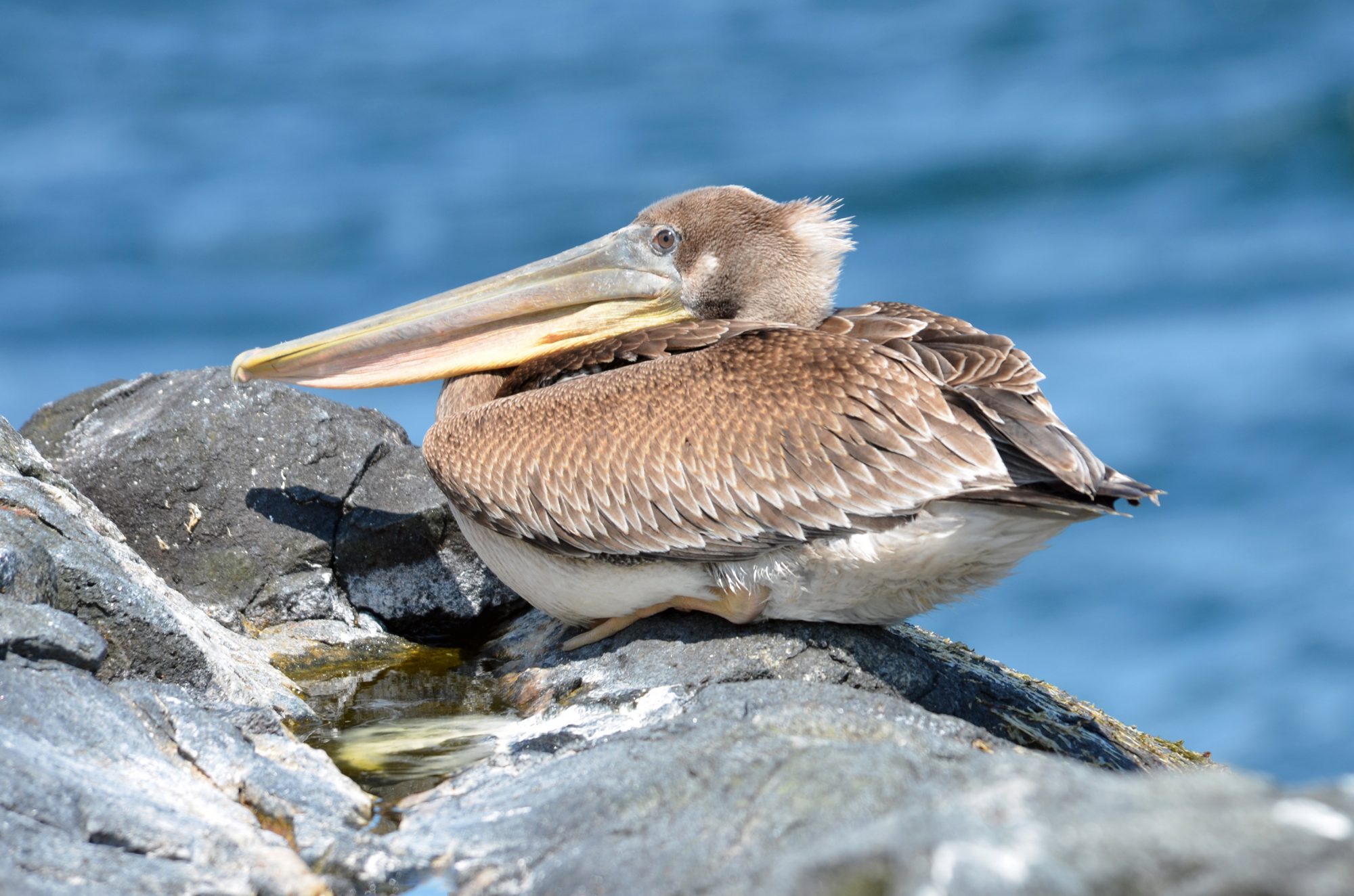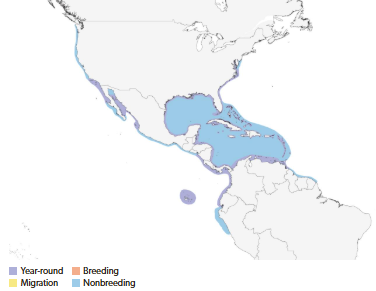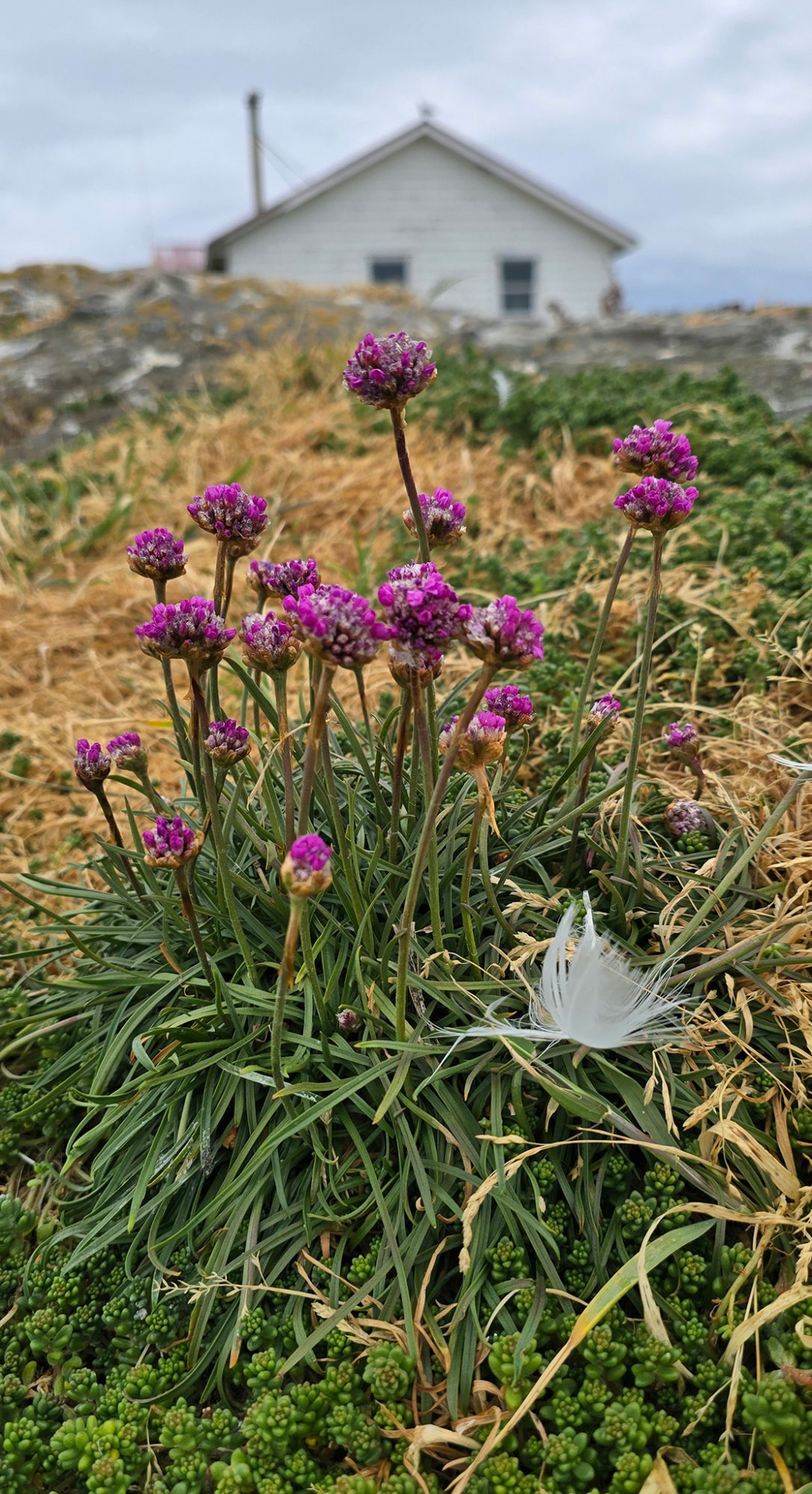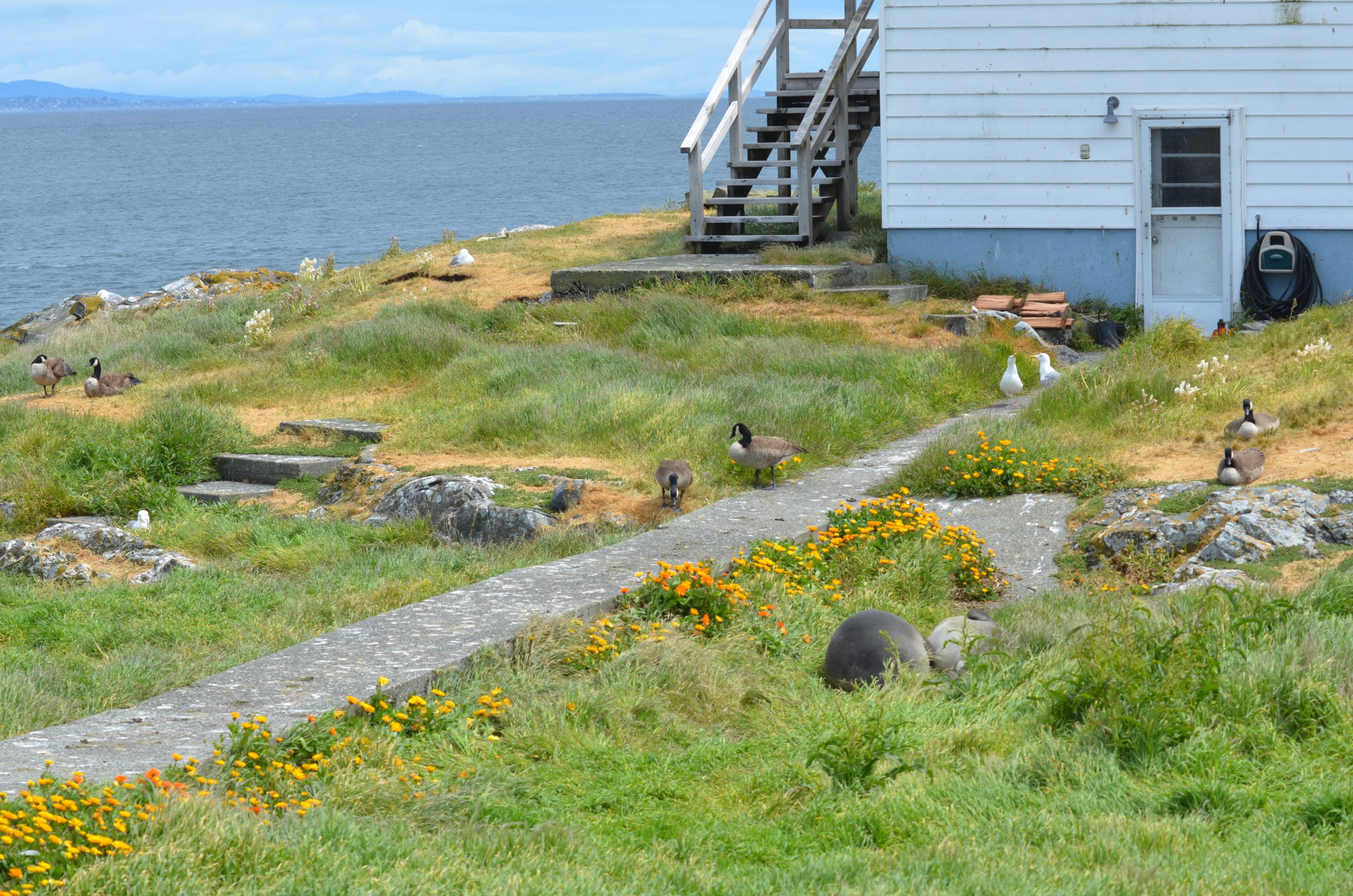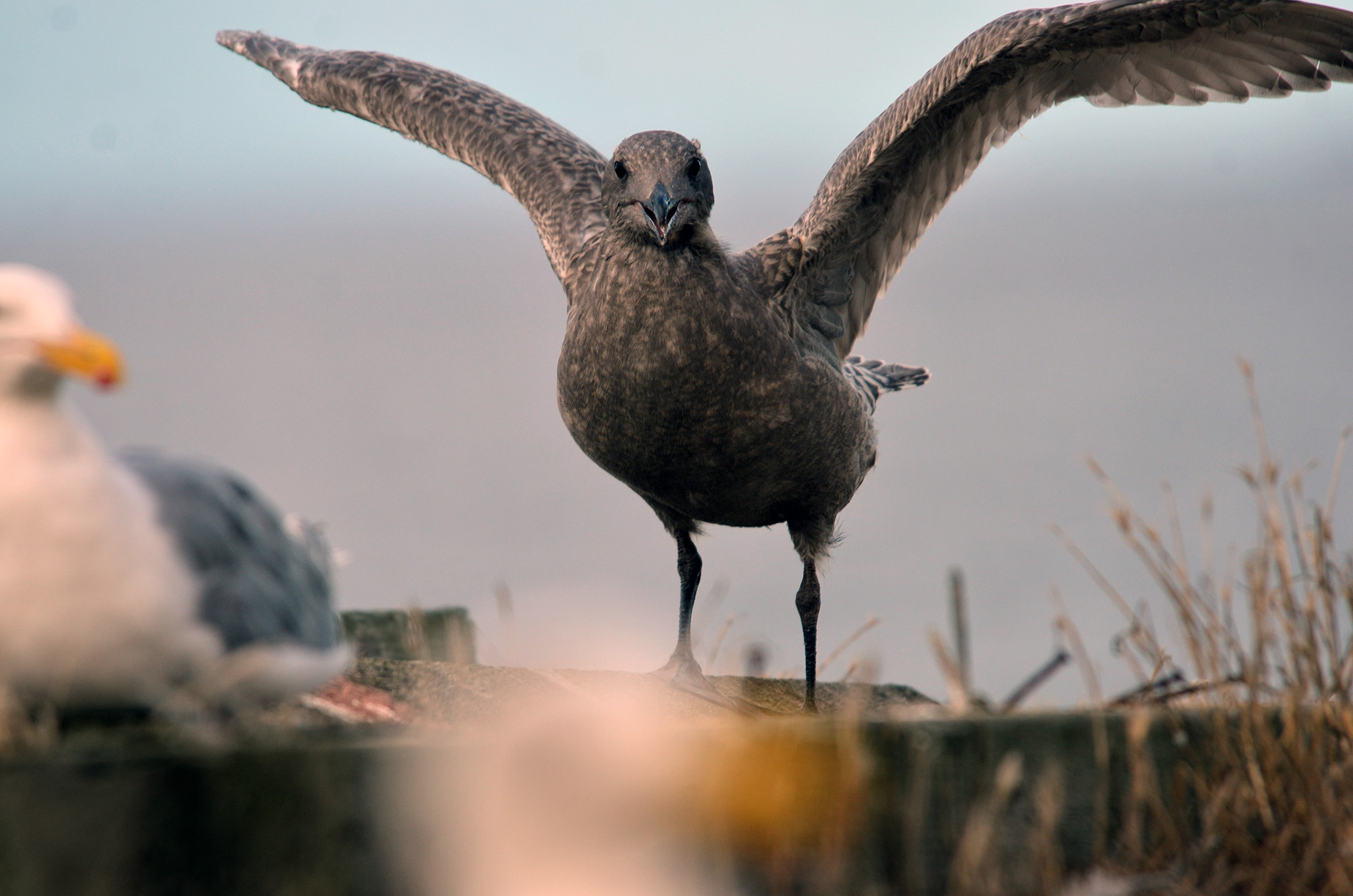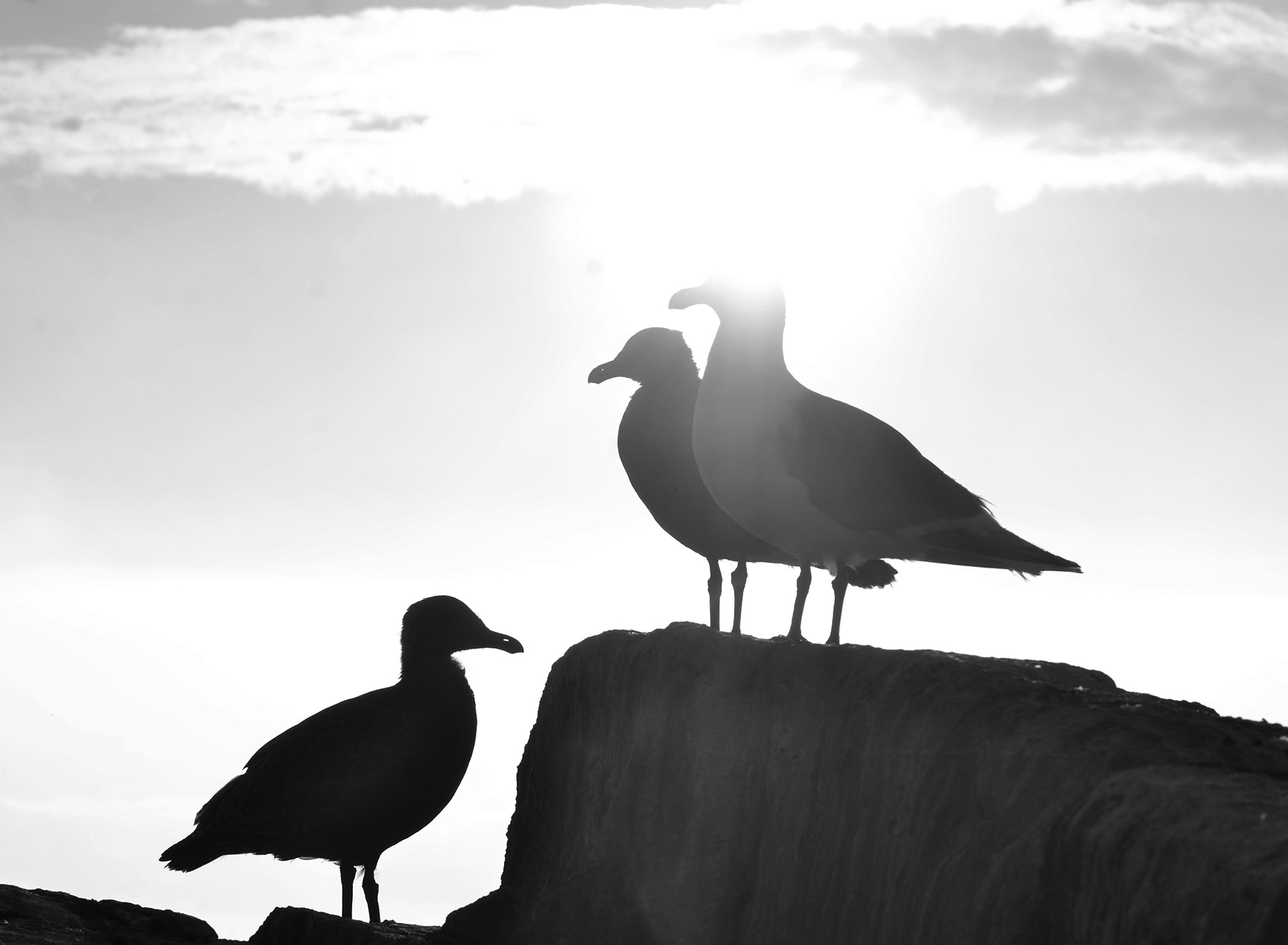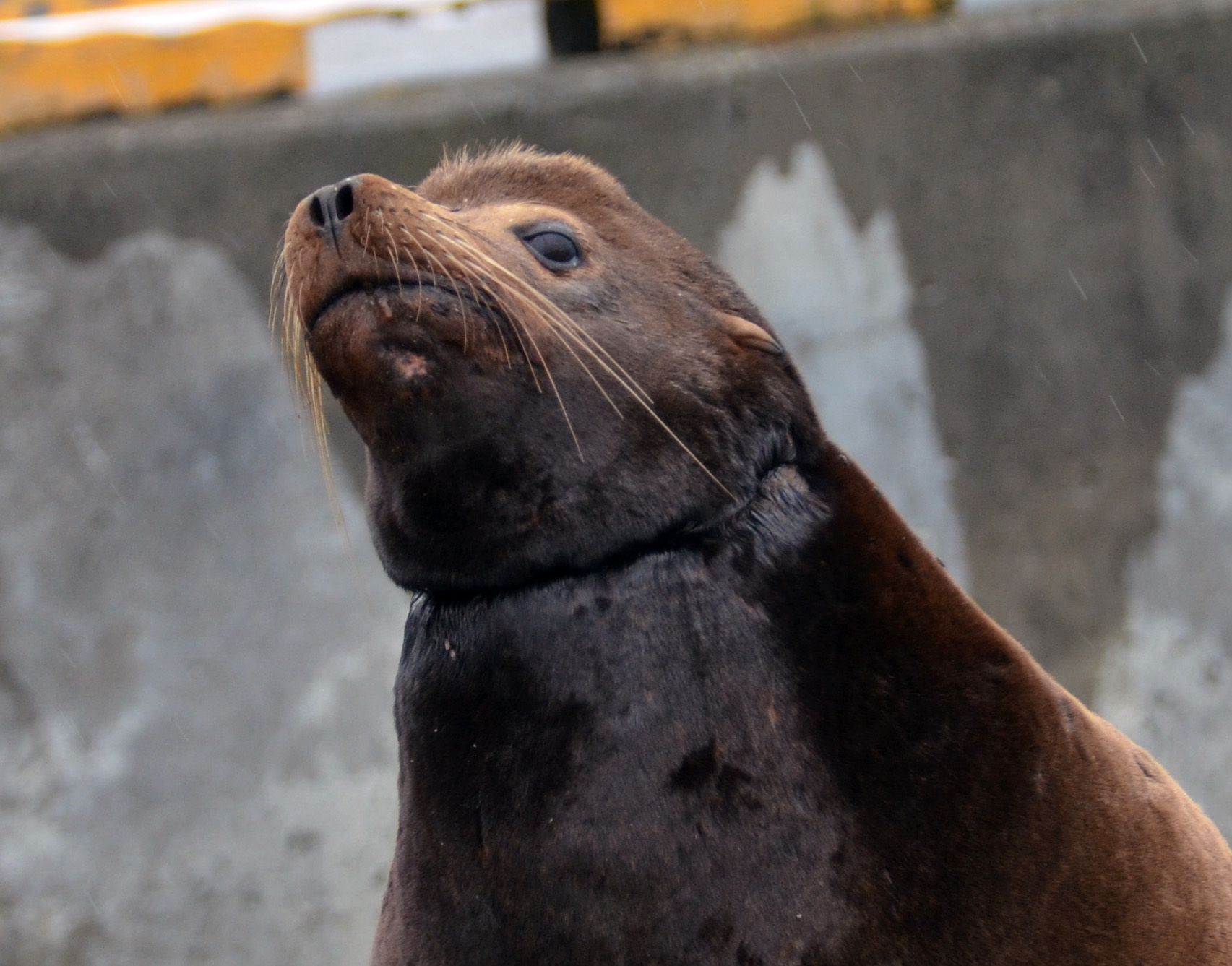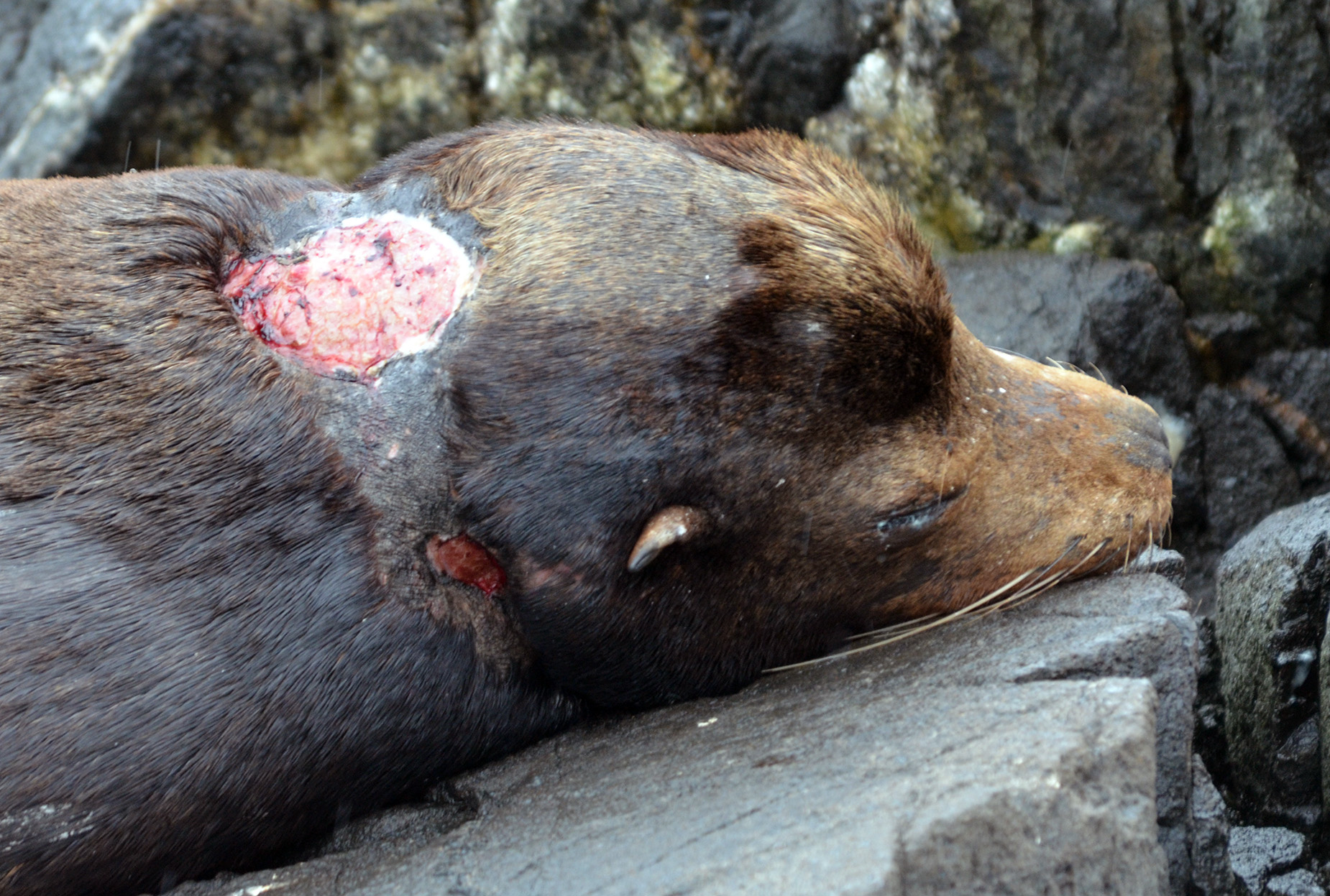Mammals:
- Steller sea lion: 6 (May 15: 21, May 8: 37)
- California sea lion: 27
- Harbour seal: 50
- Elephant seal: 4 female
Birds:
- Gulls: 467 (May 15: 391, May 8: 114)
- Pigeon guillemot: 30 (under represented, probably out fishing) (May 15: 78, May 8: 153)
- Cormorants: 43
- Canadian geese: 6
- Bald eagle: 4
- Harlequin duck: 6
- Oyster catcher: 8
Over the past three weeks there has been a reduction in the number of Stellar sea lions and a big increase in the number of gulls. Wildlife species that were present in the past week but not observed today include: brown pelican, savannah sparrow, barn swallow, killdeer, wandering tattler.

This sea lion was swimming around the dogpile on flat rock. I imaging it would hurt to haul oneself out of the water and up the rocks with an injury like that.
Facility work
- cleaned solar panels
- weeded along the panels mounted on the ground, shore side of the energy building. I walk there every day and the tall grass hides the rocky, uneven, ankle biting terrain.
Vessels
- ecotourism: 4
- private: 0
Weather
Winds southwest and westerlies 10 to 18 most of the day, westerly 25 in early evening. Cloudy day. At 8pm the batteries are only at 69% charge and 50.4V. Shame there wasn’t enough sun today. The generator may auto start before the sun comes out tomorrow. It hasn’t run for the last two days.

